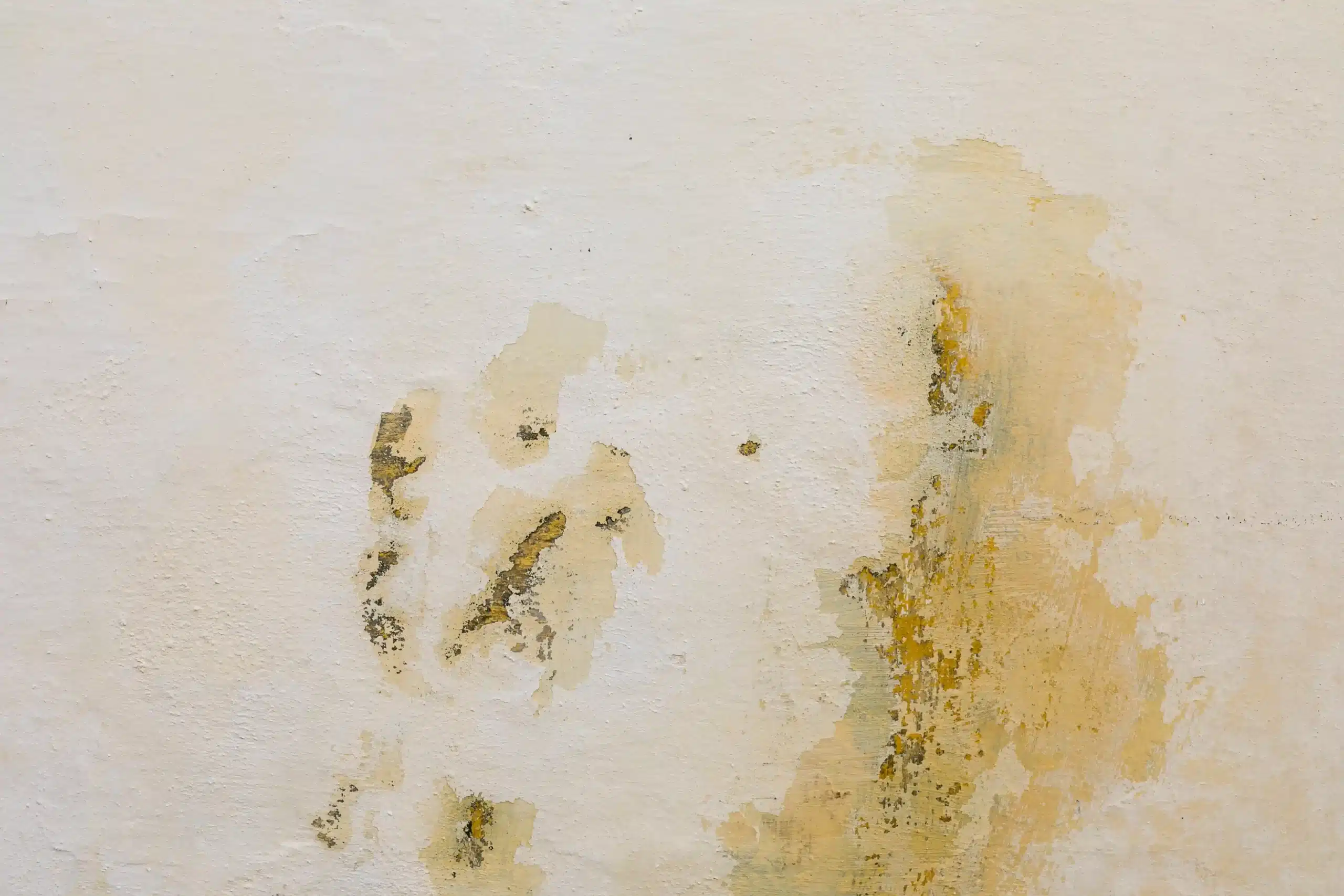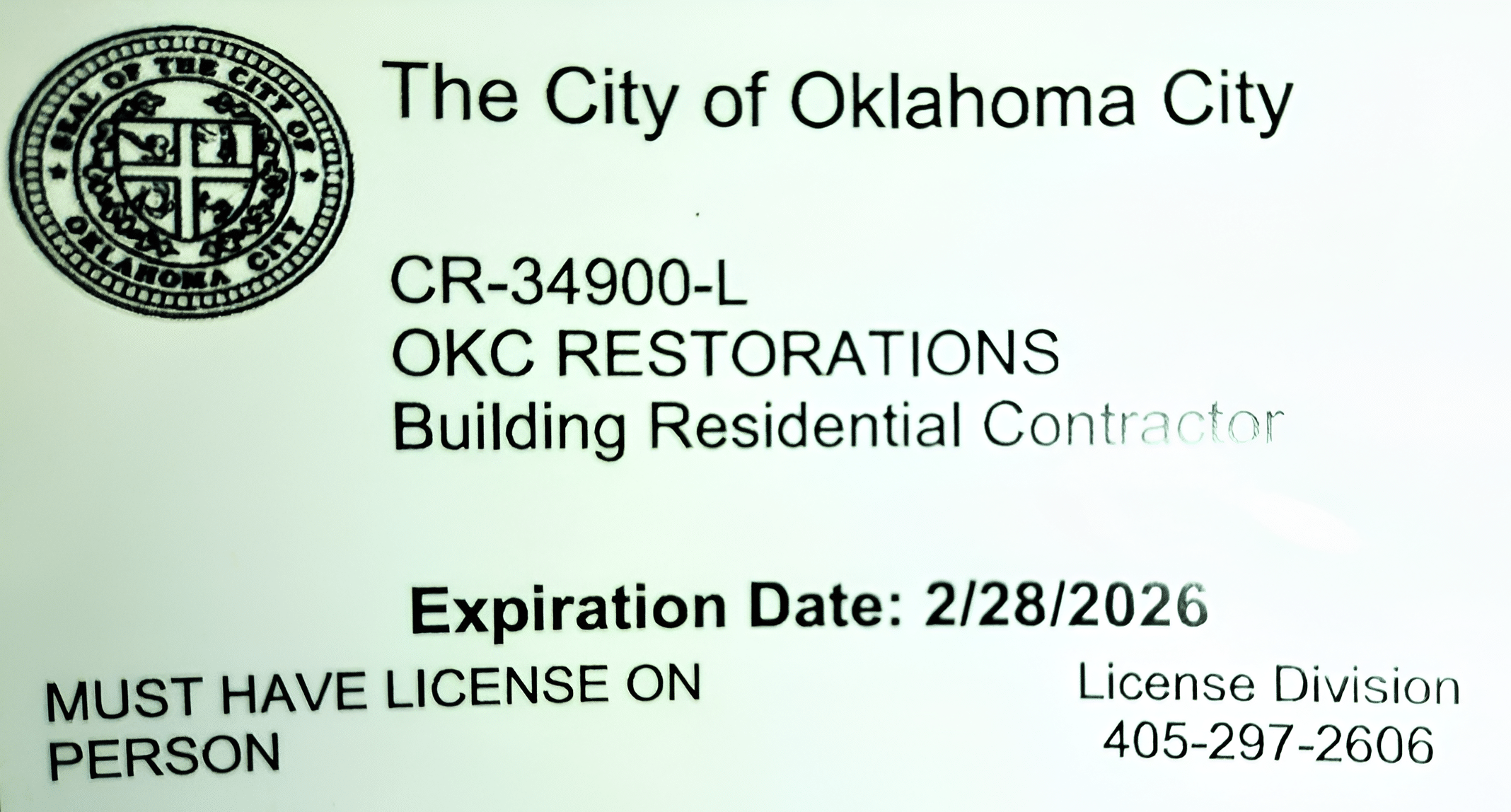
After a fire, the visible damage is only part of the problem. Smoke leaves behind a stubborn residue that discolors your walls and ceilings while filling your home with an unpleasant odor that can linger for a long time. The sooner you address this damage, the better your chances of restoring your surfaces without having permanent stains. This blog covers everything you need to know about how to clean smoke damage off of walls and ceilings, including how to prepare the room for the cleaning process, soot removal techniques, and odor elimination.
Understanding Smoke Damage
Smoke damage forms a fine layer of residue that settles on walls, ceilings, furniture, and other surfaces of your home. This particle carries acids and chemicals that slowly destroy materials, causing visible staining, rust, and foul smells that can last for months. People exposed to smoke residue experience coughing, wheezing, throat irritation, and worsened asthma symptoms. Therefore, thorough cleaning is essential as it removes these hazardous contaminants and protects your belongings from permanent deterioration.
What Cleaning Tools Do I Need?
Before you begin, make sure you have all your supplies in one place. This will eliminate the need to stop the job halfway through. Here’s what you’ll need to clean smoke damage off walls and ceilings:
- Protective gear (gloves, mask, and goggles): Protective gear protects you from inhaling dangerous soot or chemicals, touching your skin or eyes.
- Ventilation fan: A fan improves airflow to reduce fume buildup and keep the workspace breathable while you work.
- Ladder: A ladder provides safe access to higher surfaces where smoke residue tends to settle
- Vacuum with HEPA filter: A vacuum with a HEPA filter lifts away loose, dry soot without releasing fine particles back into the air you’re breathing.
- Warm water: Warm water forms the base of most cleaning mixtures and helps dissolve grimy residue.
- Mild soap or detergent: Soap or detergent will clean sensitive materials without causing damage or discoloration.
- Soot cleaner: Soot cleaner fights off the greasy film that smoke leaves on multiple types of surfaces.
- Trisodium phosphate (TSP): TSP delivers strong cleaning action for stubborn stains on durable materials like concrete.
- Vinegar: Vinegar naturally breaks down light residue while freshening up smoky odors.
- Baking soda: Baking soda neutralizes odors in fabrics and creates a gentle scrubbing paste for problem spots.
How Do I Clean Smoke Damage Off of Walls and Ceilings?
Smoke damage can make your walls and ceilings look dirty and smell unpleasant, but with the right methods, you can restore them yourself. Here’s what you need to know to get started:
1. Assess the Damage
First, carefully evaluate your walls and ceilings to see how much soot has built up. Look for dark stains, discoloration, or gray residue in natural daylight since it makes spotting damage easier. This inspection helps you choose the best cleaning method for your situation.
2. Gather Tools
Before you start cleaning, gather all the tools and cleaning supplies you’ll need. You’ll need a soot sponge, a HEPA vacuum, buckets, microfiber cloths, mild soap or TSP, and protective gear, including gloves and masks. Having all of these ready from the start makes the entire process easier and protects you from inhaling soot particles.
3. Prepare the Room
Properly preparing your space protects your belongings and makes cleaning more effective. Open all the windows and set up fans to create good air circulation that helps push soot-filled air outside and brings fresh air inside. Clear out as many items as you can from the room, and cover anything too large to move with plastic sheeting or old sheets to keep them clean. Remember to switch off your HVAC system so it doesn’t pull soot into your ducts and spread it through your house.
4. Dry Cleaning
Start with dry cleaning to remove loose soot without pushing it deeper into surfaces. Use your HEPA vacuum on walls and ceilings, holding it slightly away from the surface and working from top to bottom. Take a dry soot sponge and wipe downward in straight strokes without applying too much pressure or scrubbing in circles. Use a fresh side of the sponge when it gets covered in soot, or cut away the dirty portion to continue using clean material. This step removes most of the loose particles before moisture comes into contact with them and possibly causes permanent staining.
5. Wet Cleaning (For Heavy Damage)
Wet cleaning is necessary when dry cleaning methods leave behind a sticky residue or dark stains that won’t come off. Mix warm water with dish soap for lighter stains or prepare a TSP solution for heavier damage. Dip a sponge in your cleaning mixture and wash the walls using gentle circular motions. Rinse your sponge frequently in clean water so you’re not spreading soot around. Once you’ve cleaned everything, go over the surfaces one more time with just plain water to wash away any soap or chemical residue.
6. Removing Smoke Odor
Removing smoke odors requires additional effort because odors settle deep into porous materials even after visible soot disappears. Mix white vinegar with water and then spray or wipe it on cleaned surfaces. Place shallow bowls of baking soda or activated charcoal around the room for several days to absorb smells. If these natural methods don’t completely eliminate odors, consider commercial smoke neutralizers or professional services.
7. Drying
Thorough drying is the final crucial step that prevents mold from developing on your freshly cleaned surfaces. Position multiple fans to blow air directly across the damp walls and toward open windows for maximum ventilation. Run a dehumidifier to pull excess moisture from the air, which is especially important for rooms with high humidity levels.
Cleaning Smoke Damage on Different Surfaces
Here’s what you need to know about cleaning smoke residue from various materials found in your home:
1. Painted Walls
Before cleaning painted walls, test your cleaning solution on a small area to ensure it won’t harm the finish. First, remove loose soot with a dry sponge designed for smoke cleanup. If residue remains, you can carefully wipe the area with a damp cloth and mild cleanser, but avoid scrubbing hard, as this can peel the paint off.
2. Wallpaper
Wallpaper needs extremely gentle handling since it reacts poorly to both water and cleaning solutions. Dry cleaning with a chemical sponge is your safest choice to lift soot without causing the paper to bubble or separate from the wall.
3. Textured Ceilings
Textured surfaces like popcorn ceilings are fragile and can easily break apart under pressure or moisture. Vacuum gently with a soft brush, avoiding direct contact with the surface. For stubborn stains, applying primer and repainting usually gives better results than washing.
4. Plastered Walls
Plaster has a porous nature that allows smoke to penetrate the material. Remove all surface soot using dry cleaning methods before applying any liquid cleaners to avoid water absorption that could weaken the plaster’s structure.
5. Dry Walls
Drywall’s composition makes it vulnerable to water damage that can compromise its integrity. Remove as much soot as possible through dry methods. If some marks need extra attention, then use only a slightly dampened cloth.
6. Wooden Panels
Wood surfaces require gentle cleaning products that won’t damage their protective finish or cause warping. You must apply cleaners made specifically for wood and wipe in the direction of the grain to maintain the panel’s appearance and structural quality.
Dealing With Stubborn Stains & Odors
When basic cleaning falls short against heavy smoke damage, you’ll need to try more targeted approaches. Below are some effective methods for handling tough stains and lingering odors:
- Using baking soda for stubborn stains: Leave open boxes of baking soda in affected rooms for up to a week to naturally pull smoke smells from the air and soft materials.
- Vinegar to absorb odors: White vinegar placed in bowls around your space helps eliminate smoke odors by neutralizing the particles that cause unpleasant smells.
- Call for professional help: If discoloration and odors won’t go away even after you’ve cleaned and aired out the space thoroughly, it means the smoke has soaked too far into your walls. You may need to hire a fire damage remediation team; they have specialized equipment and targeted solutions that can restore a clean, fresh atmosphere in your home.
When to Call Professionals
You should contact fire damage restoration specialists when smoke has traveled throughout several rooms or gotten into your ventilation system. These situations require professional-grade equipment for thorough cleaning and the safe handling of potentially harmful residues. Another issue could be the water used to extinguish the fire, which may promote mold growth if not properly dried out within a couple of days. Professionals from OKC Restorations have both the training and tools to handle complex situations safely, ensuring your home is thoroughly cleaned and your indoor air quality is restored.
Summary
Smoke residue settles into your walls and ceilings after a fire, leading to stains and odors that continue long after flames are out. Using the proper cleaning processes, from vacuuming loose soot to washing your walls with gentle cleaning solutions, helps you restore your surfaces and avoid permanent damage. OKC Restorations handles comprehensive fire and smoke cleanup; our team of trained professionals will remove soot, eliminate odors, and restore your home using industry-approved techniques. Call us for reliable restoration services in your Oklahoma home.




